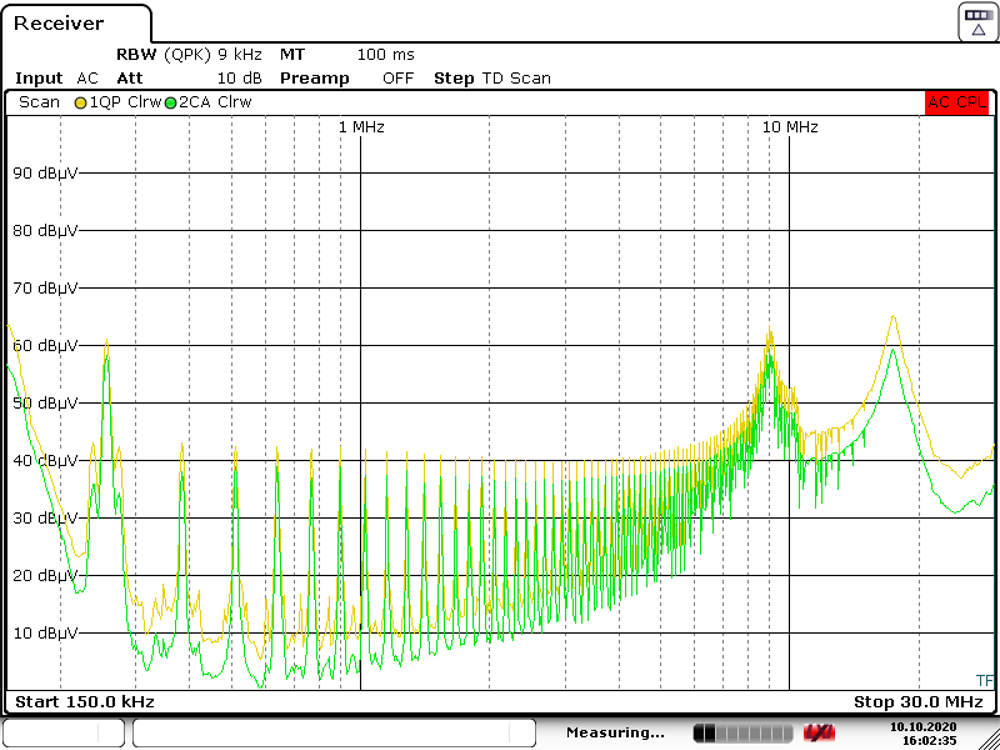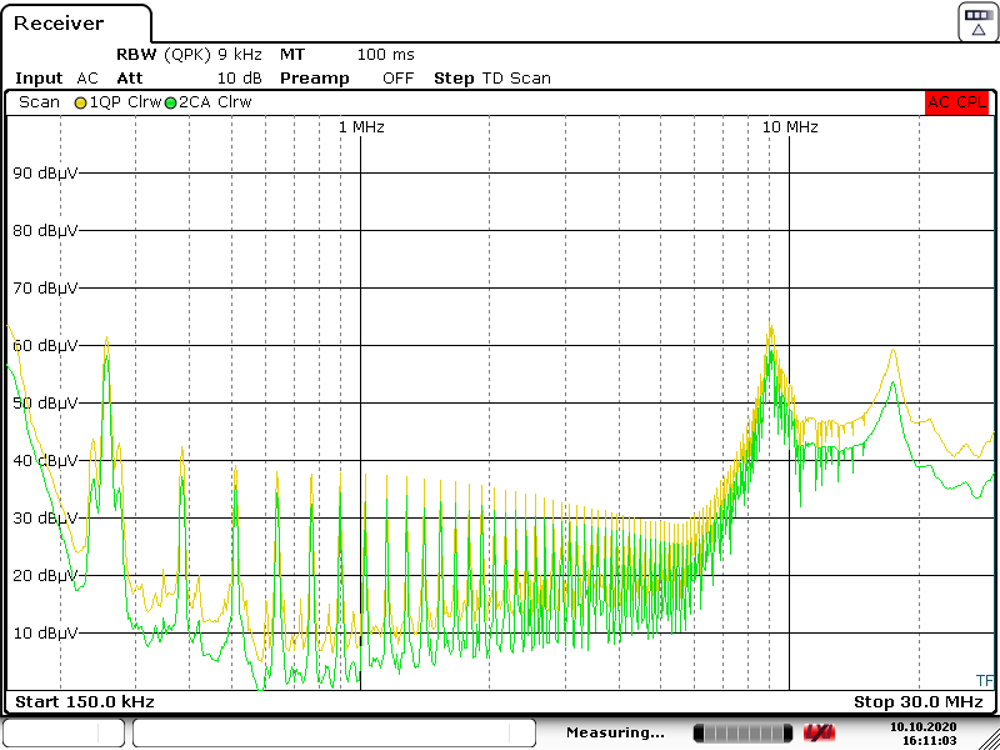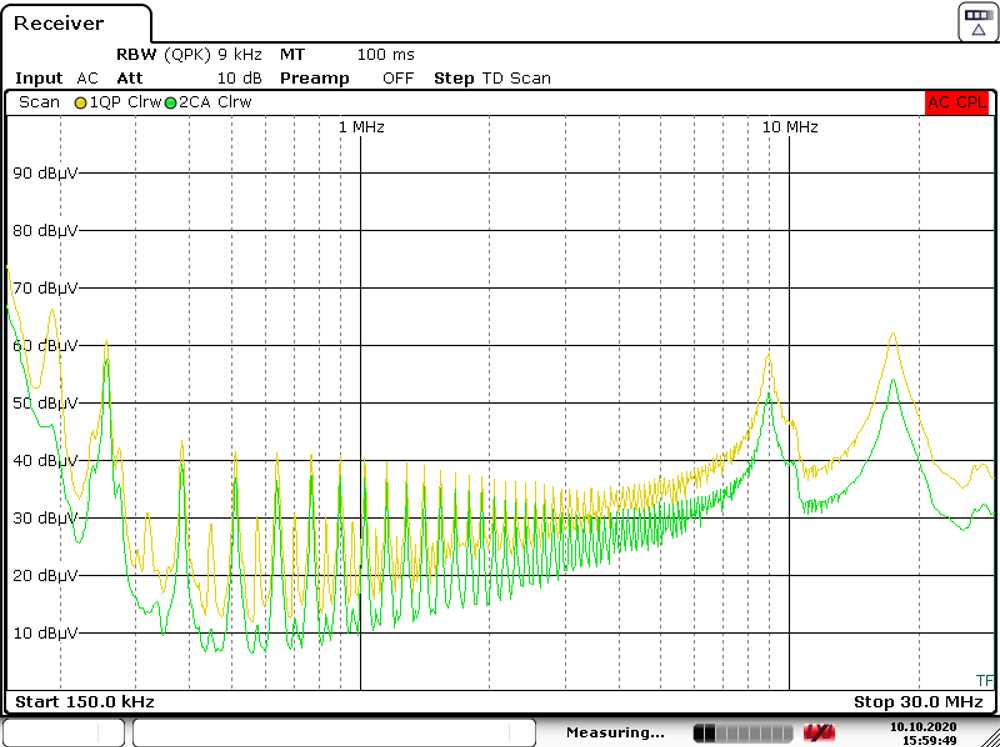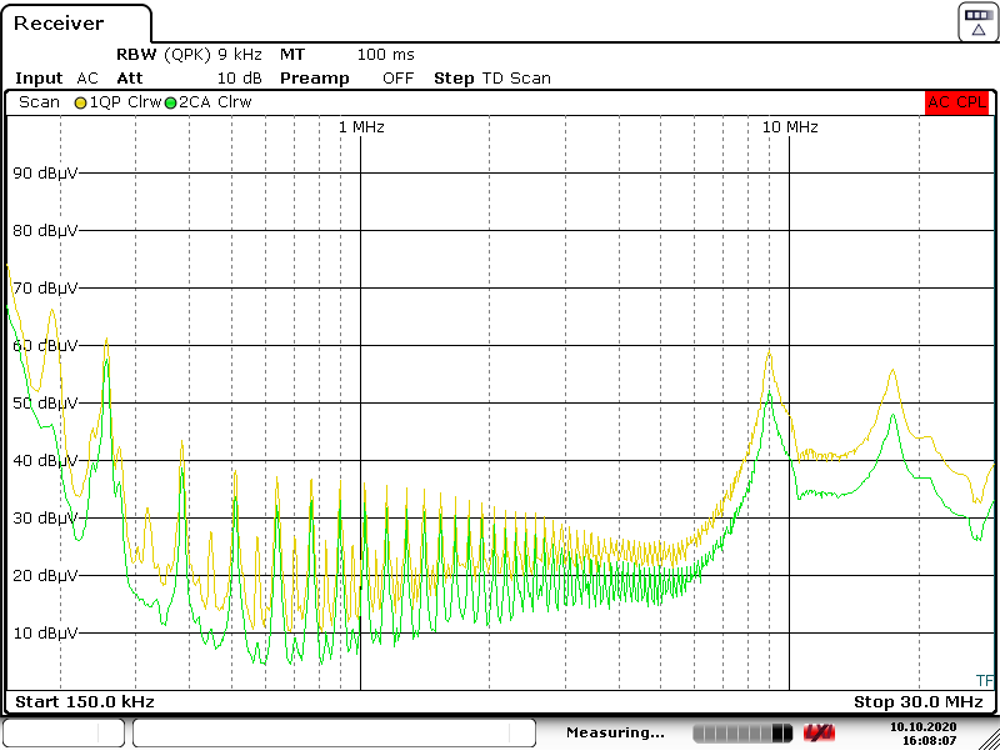TIDT213 March 2023
8 Conducted Emission
The conducted emission graphs are illustrated in the following images.
 Figure 8-1 120 VAC, 60-Hz
Input at Around 0.85-A Output, Line (Trace 1 = Quasi-Peak, Trace 2 =
Average)
Figure 8-1 120 VAC, 60-Hz
Input at Around 0.85-A Output, Line (Trace 1 = Quasi-Peak, Trace 2 =
Average) Figure 8-2 120 VAC, 60-Hz
Input at Around 0.85 A-Output, Neutral (Trace 1 = Quasi-Peak, Trace 2 =
Average)
Figure 8-2 120 VAC, 60-Hz
Input at Around 0.85 A-Output, Neutral (Trace 1 = Quasi-Peak, Trace 2 =
Average) Figure 8-3 230 VAC, 50-Hz
Input at Around 0.85-A Output, Line (Trace 1 = Quasi-Peak, Trace 2 =
Average)
Figure 8-3 230 VAC, 50-Hz
Input at Around 0.85-A Output, Line (Trace 1 = Quasi-Peak, Trace 2 =
Average) Figure 8-4 230 VAC, 50-Hz
Input at Around 0.85-A Output, Neutral (Trace 1 = Quasi-Peak, Trace 2 =
Average)
Figure 8-4 230 VAC, 50-Hz
Input at Around 0.85-A Output, Neutral (Trace 1 = Quasi-Peak, Trace 2 =
Average)